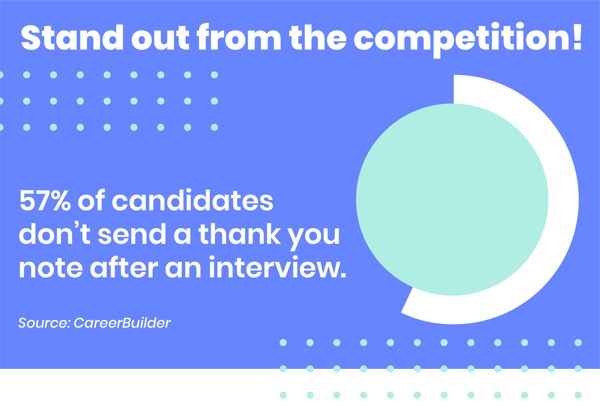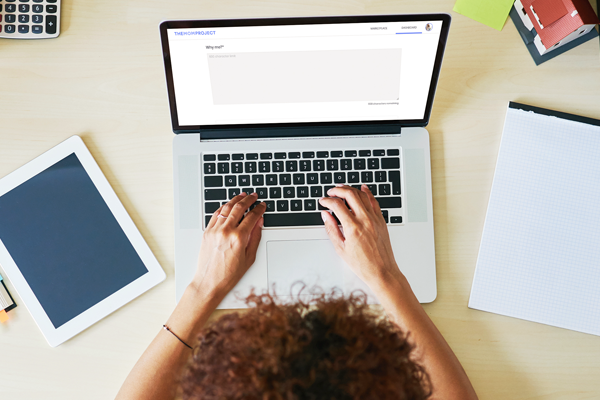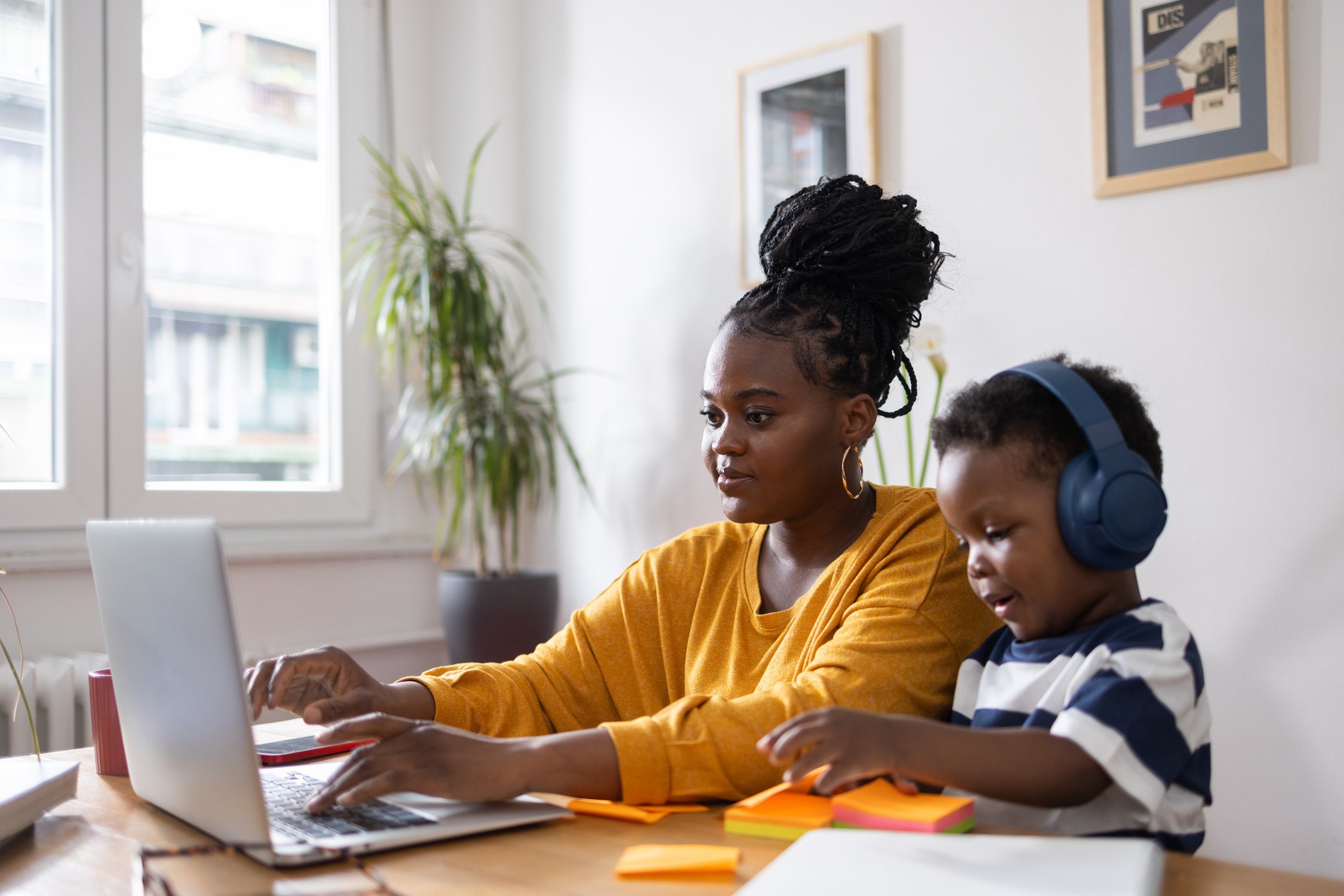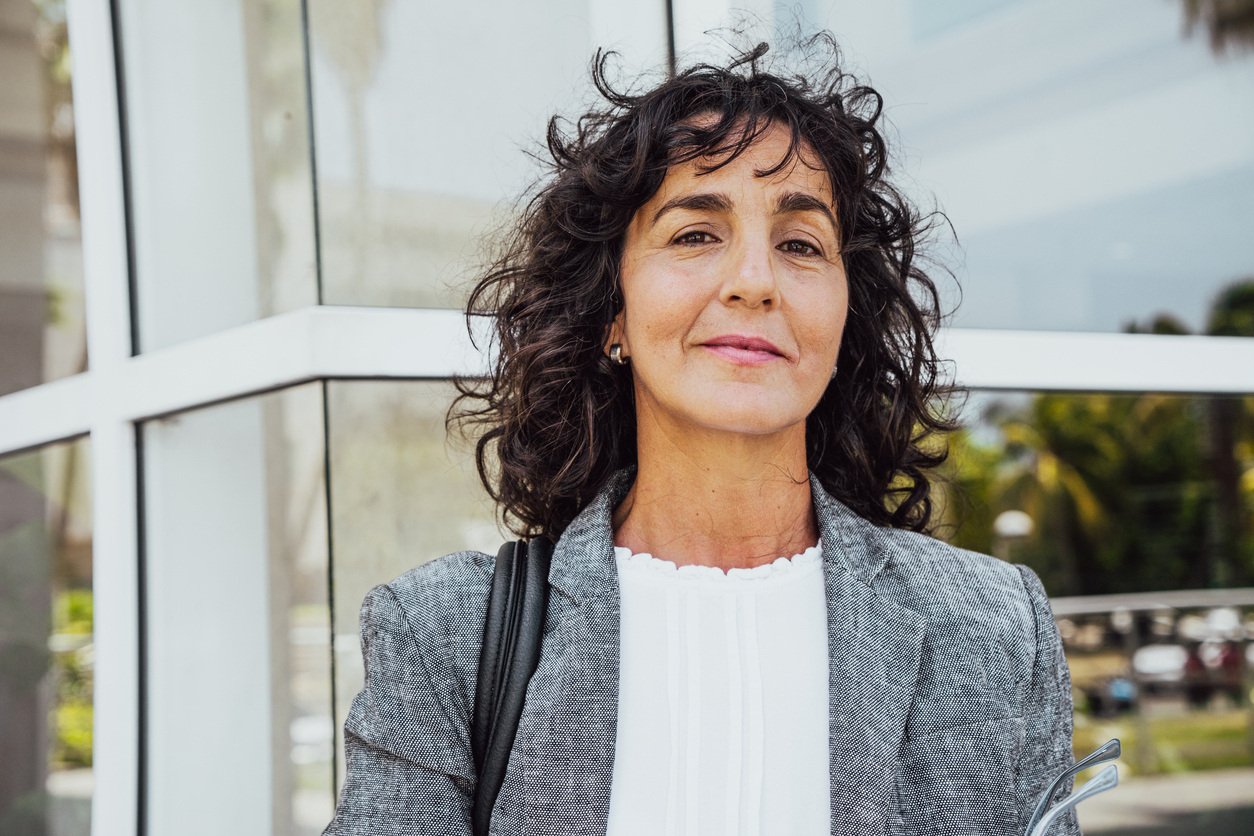Send a memorable follow-up email that seals the deal.
Whew, you just finished your interview. Congrats! But before you unwind, there’s still one last step to seal the deal—thanking the interviewer for their time.
This last follow-up is so much more than a thank you note—it’s your last chance to drive home your qualifications and show that you’re the best candidate for the job. While it only takes a few minutes, it can make a big difference: Research shows that 68% of interviewers take a thank you note into account when determining who to hire.
So, how do you write a post-interview thank you note that helps you leave a lasting impression? Let's talk.
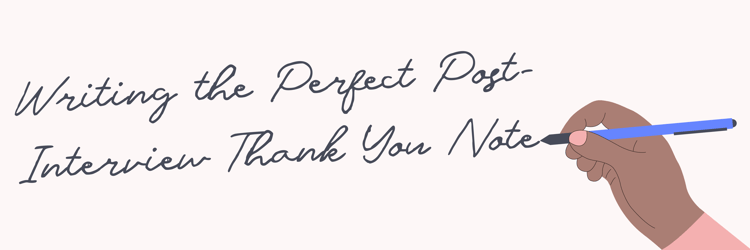
How and when to deliver your message
Here’s some good news—email isn’t a cop-out. In fact, 94% of hiring managers say that it’s the most appropriate medium of sending thank you notes. As tempting as it may sound to stand out to the hiring manager by delivering a handwritten letter, sending a note by mail comes with a whole slew of risks, like getting lost in the mail or arriving after the hiring decision has already been made.
Try to send out the note as soon as possible after the interview. That doesn’t mean you have to send it ten seconds after you leave, but if not by the end of the workday, send it by 9 AM the day after. If you’re worried it might slip your mind when you get home, set a reminder on your phone. Try not to send the email from your smartphone, even if that means waiting a few more hours. It’s much easier to make auto-correct or formatting mistakes on mobile, not to mention the risk of leaving the “Sent from my iPhone” tag at the bottom.
What if I don’t have the interviewer’s contact info?
This situation is bound to come up at some point in your career if it hasn’t already. In some cases, not having the interviewer’s email could mean that they don’t want to be contacted. If you don’t have a direct line of contact going into an interview, ask for a business card at the end of your meeting. If it’s virtual or over the phone, ask if you can have their email to send a followup message and see how they respond.
👉 If you’re interviewing for a role through The Mom Project, you can ask your TMP contact to forward your thank you note to the hiring manager. This will also signal to the recruiter that you’re taking initiative to follow up.
Keep your message professional and brief
You don’t have to write overly formal, but you should maintain a professional tone. Avoid unnecessary abbreviations, slang or excessive exclamation points. Even if you feel like you really clicked with the interviewer, write like you’re speaking to a colleague, not a friend. Your thank you note is also a reflection of your professional writing and communication style, so make sure it meets the same standards you’d hold yourself to as an employee.
For that same reason, concision is key! Touch on every point, but don’t write a novel. Limiting your letter to a few sentences will show respect for the interviewer’s time. A good general rule of thumb is to keep it under 250 words, unless you’re diving in-depth into new information that you think your interviewer should know about you.
Breaking down your thank you message, step-by-step
There are six components of a successful post-interview thank you note:
- Start with a greeting
- Express appreciation
- Bring up something you learned
- Remind them of something you discussed
- Tell them something that didn’t come up
- Reiterate your interest in the role
1. Start with a greeting
Just like in a conversation, start out by saying hello! Address your interviewer by name, and triple-check the spelling to avoid offending them.
2. Express appreciation
Everyone likes their efforts being acknowledged, and interviewers are no exception. Let them know how much you enjoyed speaking to them and thank them for their time.
Example: “Thank you for taking the time to talk to me about the UI/UX designer position and tell me more about the team at [XYZ company].”
3. Bring up something you learned about the company
Mention something you remember from your conversation, and how it fits into your own long-term goals. You can talk about the answer to a question you asked, a part of the conversation that stood out to you or something you learned during the process. This will convey interest and show that you were actively engaged in the conversation.
Example: “I’m excited to learn more about the new user testing initiative you’re working on.”
4. Remind them of something you discussed
Leave the interviewer with something to remember about you. Was there something unique on your resume that they asked you to elaborate on? Did you two connect about a shared interest? This will keep you fresh in the interviewer’s mind so you don’t get lost in the shuffle of their other interviews.
Example: “Developing the user testing process at my last startup was one of the most interesting projects I’ve done.”
5. Tell them something new that didn’t come up in the interview
It can be hard to think in the heat of the moment, and sometimes the best answer to a question doesn’t come to you until after the interview is over. If there’s anything you didn’t get a chance to tell them (or something that just slipped your mind during the conversation), this is your chance to address it.
Example: “I used a lot of [XYZ company] community resources when I was first starting out my career in design, so it was really cool to be able to talk about the behind-the-scenes work with you.”
6. Wrap it up
Before you close this out, reiterate and reinforce your interest one last time. Leave the line of line of communication open by offering to provide more information or materials if necessary, and express excitement to hear back. Use a warm and professional send-off (ex: Best Regards, Sincerely, etc.) to finish your message. Make sure you include your contact information and links to your LinkedIn profile and/or website in your signature line.
Example: “Your team seems like a great fit for my skills and interests, and I’m so excited about this opportunity. Please reach out if you need anything else from me. Looking forward to hearing from you soon! Kind Regards, Jane Smith”
Putting it all together:
Hi Mr. Johnson,
Thank you for taking the time to talk to me about the UI/UX designer position and tell me more about the team at [XYZ company]. I’m excited to learn more about the new user testing initiative you’re working on. Developing the user testing process at my last startup was one of the most interesting projects I’ve done. I used a lot of [XYZ company] community resources when I was first starting out my career in design, so it was really cool to be able to talk about the behind-the-scenes work with you. Your team seems like a great fit for my skills and interests, and I’m so excited about this opportunity. Please reach out if you need anything else from me. Looking forward to hearing from you soon!
Kind Regards,
Jane Smith
LinkedIn: linkedin.com/in/jane.smith
Final Thoughts
We know that by the time the interview is over, sending another email may be the last thing you want to do. But trust us—sending a thank you note might be your easiest job as a candidate but it leaves a meaningful impact. And since 57% of candidates don’t send a thank you after an interview, it’ll make you stand out!
Join our professional member network
Navigating work and parenting is a balancing act. Join The Mom Project to access job opportunities, career development resources and connect with a network of professionals that value work and family. 

